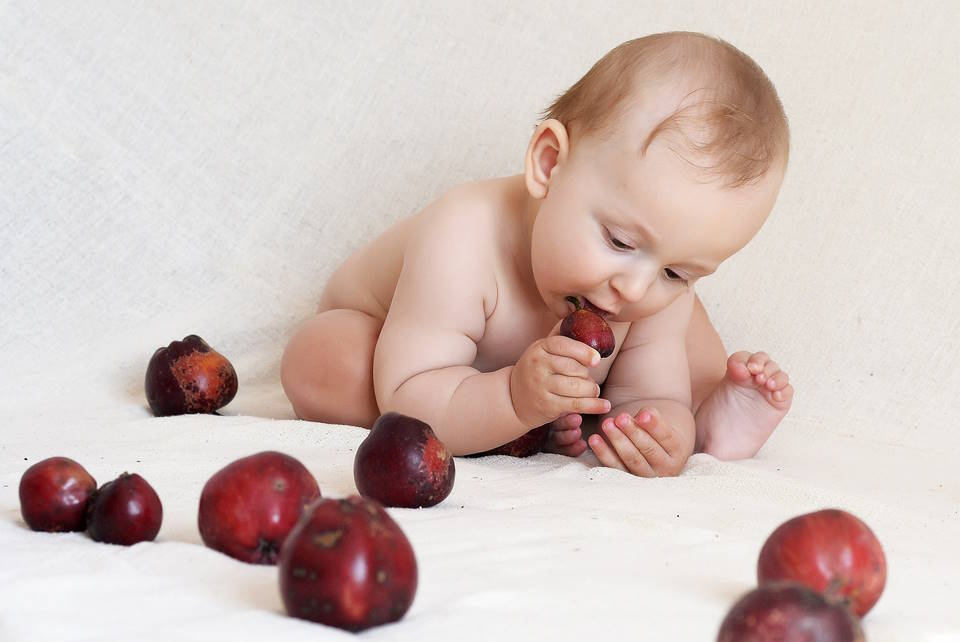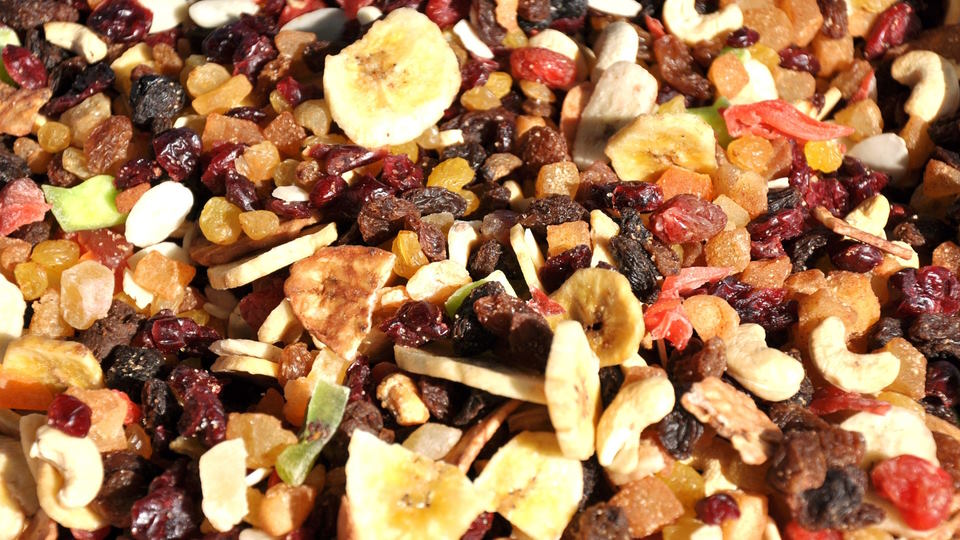Feeding your baby solid foods is a major milestone. It marks the switch from breast milk or infant formula to a more varied diet. Introducing your baby to solid foods can be a daunting task, but it doesn’t have to be. We will talk about the the basics you should know about introducing solid foods to your little one.

When to Start
The American Academy of Pediatrics (AAP) recommends introducing solid foods to infants when they’re between 4-6 months old. This is because babies’ digestive and immune systems are not ready to handle solid foods before then.
Some signs your baby may be ready for solid foods include:
- Can sit up with support
- Shows interest in watching others eat
- Can move food from a spoon to their mouth
What to Feed

When starting solids for your baby, it’s best to start with single-ingredient foods. This will help you identify any potential allergies and make it easier for your baby to learn how to eat. Good starter foods include pureed vegetables, fruits, beans, and grains. Once your baby is comfortable with these, you can introduce more complex combinations like casseroles and pureed meats. It’s important to remember that babies need a balanced diet. They should get a variety of vitamins and nutrients from all five food groups.
This includes:
Food Safety

Because babies’ immune systems are still developing, it’s important to make sure their food is safe. Always wash your hands and your baby’s hands before eating and preparing food. Wash all fruits and vegetables before feeding them to your baby, and cook meats and eggs thoroughly. Avoid honey, unpasteurized milk, and foods with added sugars until your baby is at least 12 months old. When in doubt, talk to your pediatrician about which foods to introduce and when.
The Right Age: Understanding the Recommended Age for Introducing Solid Foods to Babies
Introducing solid foods to babies is an important milestone for parents and babies alike. Even though it can be an exciting time for parents, it can also be daunting. There are many factors to consider including the right age for introducing your baby to solid foods.
What is the Recommended Age for Introducing Solid Foods?

The World Health Organization (WHO) and the American Academy of Pediatrics (AAP) recommend introducing solid foods to babies at around 6 months of age. This age is generally when babies have developed enough coordination and head control to start taking in semi-solid and solid food.
However, this age is only a general guideline and not a hard and fast rule. If a baby is not quite ready to take in solid foods, they can still benefit from a nutrient-rich liquid diet until they are ready. It is important to keep in mind that every baby is different and may be ready to start eating solid foods earlier or later than 6 months.
Tips for Introducing Solid Foods Safely

When introducing solid foods to your baby, it is important to do it slowly and safely.
Here are some tips for introducing solid foods:
- Start by offering small amounts of single-ingredient, pureed or mashed foods.
- Introduce new foods one at a time to ensure that any allergic reactions can be easily identified.
- Make sure the texture of the food is suitable for your baby. Introduce thicker textures as your baby develops more head control and coordination.
- If you are introducing food made at home, make sure to not add any salt, sugar, or other ingredients.
- If you are introducing store-bought food, make sure to check the label for any added salt or sugar.
- Always supervise your baby when they are eating and in case of any choking hazards.
Identifying the Signs that a Baby is Ready for Solid Foods

Every baby develops at their own pace, and there is no exact timeline for when they should start eating solid foods. However, there are a few signs that can indicate when a baby is ready to begin transitioning to solid foods. These signs include:
- They can hold their head up and sit with support
- They are more than six months old
- They can open their mouth when a spoon is offered
- They can pick up food and put it in their mouth
- They express interest in food, such as trying to grab food from other people’s plates
In general, babies should still primarily be receiving nutrition from breast milk or formula. Solid foods should not be given until babies are at least six months old, as their digestive systems are not yet developed enough to process and digest solid foods. Furthermore, introducing solid foods too early can increase the risk of food allergies and other health conditions. Solid foods should be gradually introduced and offered in small pieces, only after a baby has indicated signs of being ready.
First Foods First: Choosing the Best Initial Solid Foods for Babies

When you start introducing solid foods to your baby, you want to make sure you choose the right first foods.
Here are some tips on how to select the best initial solid foods for your baby:
Consider Timing
The American Academy of Pediatrics (AAP) recommends introducing solid foods to babies when they are around 6 months of age. Before that, their digestive systems are not mature enough to handle the new foods. For most babies, this timing is right around when they can sit up and hold their head up.
Start with Single-Grain Cereal
The AAP recommends starting babies out with single-grain cereals, either mixed with a breast milk, formula, or water. Single-grain cereals are a great way to start introducing your baby to solid foods because they are easily digestible and are fortified with iron, a crucial nutrient for infants. Examples of single-grain cereal include rice, oat, and barley cereals.

Introduce Vegetables & Fruits
Once your baby has become comfortable with single-grain cereals, you can start introducing vegetables and fruits one at a time. Start your baby off with softer, highly-nutritious foods that are easy to digest, like avocado, sweet potato, and banana. Avoid processed foods and any with added salt or sugar. Make sure you wait at least 2-3 days before introducing any new food so you can watch for any allergic reactions.
Choose Healthy Foods
When introducing solid foods to your baby, it’s important to choose those that are healthy and easy to digest. Some healthy options include cooked vegetables like carrots, spinach, and squash; cooked fruits like apples, pears, and bananas; and starches like whole-grain breads and pastas. Avoid processed, high-sugar, or high-sodium foods. If you’re giving your baby snacks, look for healthy options such as whole grain crackers, toast with nut butters, or slices of vegetables or fruit.
Balancing the Frequency and Quantity of Solid Food for Babies

When it comes to feeding babies solid food, it is important to balance the quantity and frequency of the food being provided. The appropriate amount of food and frequency at each stage of a baby’s development will vary. The age, size, and appetite of each baby should be taken into consideration when determining the amount and frequency of solid foods to be offered.
In general, it is recommended that babies begin eating solid foods when they have reached 6 months of age. This will give their digestive systems enough time to develop and prepare for the introduction of solids. After starting solids, it is important to gradually increase the quantity of food given. Babies at this age should begin with small amounts of food (about a teaspoon per feeding). As their appetite increases, these amounts can be gradually increased up to about three tablespoons per feeding.

The frequency of feedings will also vary from baby to baby. Some may be ready to eat solid foods three times per day, while others may only be able to comfortably handle two meals. It is important to listen to your baby’s cues and respond accordingly. If your baby shows signs of hunger between meals, offer a snack of soft fruits or vegetables. If your baby appears to be full after a meal, it is best to wait until they are hungry again before offering more food.
When introducing solids to your baby, it is important to consider both the quantity and frequency of the food being offered. Babies should be gradually introduced to solids and should not be overfed. Babies should be allowed to determine the amount of food they need at each feeding, and parents should pay attention to their individual cues. With the right guidance, feeding solid foods to your baby should be a positive and enjoyable experience for you both.
The Potential Dangers of Starting Solid Foods Too Early
Starting solid foods before the recommended timeline can have a number of adverse effects on a baby’s health. Research has linked early introduction of solid foods with an increase in body fat, with some studies showing long-term effects into adulthood. Early introduction of solid foods may also impact a baby’s need for breastmilk or formula, therefore impacting the overall nourishment for the baby during this crucial time of growth and development. It can also put a baby at a higher risk of food allergies and food sensitivities.
Understanding the Risks of Allergies with Certain Solid Foods

Allergies to certain foods can be dangerous and even life-threatening. Knowing the potential risks of allergies to certain solid foods can help you make informed decisions about what to eat and keep you safe.
Common Food Allergies
The eight most common food allergies are peanuts, tree nuts, milk, eggs, wheat, soy, fish, and shellfish. A person can be allergic to one or multiple of these foods. Allergic reactions to these foods can cause a range of symptoms from mild to severe. It is important to note that even trace amounts of an allergen can cause a reaction.
Symptoms of Allergic Reactions
The most common symptoms of an allergic reaction to certain foods include: hives, itching, swelling of the tongue, throat, and lips, vomiting, diarrhea, wheezing and difficulty breathing, and a drop in blood pressure. Symptoms can appear quickly or take several hours to appear. In severe cases, an anaphylactic reaction can occur. Anaphylaxis is a medical emergency, and medical attention should be sought immediately.
Prevention of Allergic Reactions

The best way to prevent an allergic reaction is to avoid foods that may cause a reaction. Reading food labels carefully is important to ensure that the food does not contain any of the common allergens. It is also important to be aware of hidden sources of the allergens, such as medications and dietary supplements. Iff you are at risk of an allergic reaction, it is recommended to wear a medical alert bracelet.
Factors to Keep in Mind When Introducing Solid Foods to Babies with Special Needs
When introducing solid foods to babies with special needs, there are several important factors to keep in mind. First and foremost, ensuring that the baby is receiving enough nutrition is key. Parents should speak with a doctor or registered dietitian before starting solid foods to determine the quantity and nutritional makeup of the foods that may be appropriate. Additionally, it is important to look at any potential allergies or medical considerations that can arise if a certain food is introduced. Parents should also be mindful of any potential choking hazards, and the texture and consistency of the food should be appropriate for the baby. Recognizing that it may take time and patience to introduce solid foods is critical.
Understanding the Signals that a Baby is No Longer Hungry and Doesn’t Want to Eat Solid Foods

Signaling Fullness
Babies have a variety of ways to let their parents know when they are full or done eating. These signals can vary from movement to sound. Parents should be able to recognize their baby’s signs of fullness, and honor them by stopping the feeding. Common signals that a baby is full include: turning their head away, not opening their mouth, pushing away the bottle or spoon, or closing the mouth after opening it.
Handling Refusal
Every parent will face occasions when their baby refuses solid food. While this may be frustrating, it’s important to remember that it is normal and okay. Parents should never force their baby to eat and should accept the signal that their baby is done eating. Instead of pushing food, parents should try to create a positive feeding experience and talk to their baby or read a book. The baby will eventually learn to enjoy healthy foods in time.

Knowing when to Seek Help
If a baby consistently refuses solid food, it is important for the parent to seek medical advice. Because a baby needs the nutrients gained from eating solid food, it is important to consult with a doctor if a baby does not seem to be eating. A doctor may suggest changes for the parents to make, such as adding more liquids to the baby’s diet, or introducing solids in smaller portions. Additionally, a doctor may suggest medical treatments or therapies to help the child develop a taste for solid food.
A Full Plate: Concluding Thoughts on Introducing Solid Foods to Babies

Introducing solid foods to babies can be a stressful and confusing time for parents, but with a bit of preparation, and patience, parents can expect a smooth experience. The ideal time to start introducing solids to babies is at around six months, when the baby is able to sit up unassisted, and has doubled their birth weight. Breastmilk or formula should still remain the primary source of nutrition for the baby until the age of one year.
Parents should take the time to make any food that they plan to introduce to their baby, as this will ensure that the food is as fresh and nutritious as possible. It is important to remember that the introduction of a variety of flavors over time is the best way to establish a good relationship with food.

To ensure the baby is not left feeling overly full, they should be allowed to take a break in between meals, and ride out any bubbles they may experience after eating. Parents should introduce new foods one step at a time, allowing two to three days to observe any potential allergies before introducing the next food item.
Finally, parents should understand that there is no right or wrong way to introduce solid food to a baby. By following the general guidelines outlined above, parents can expect a pleasant experience for both them and their baby.




